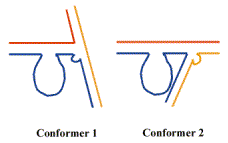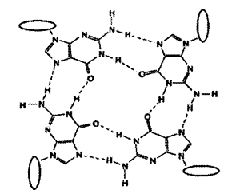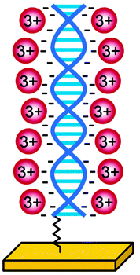

Our Research
We are interested in the chemistry
and biochemistry of DNA and RNA, with special regard to novel structural and
functional properties for these nucleic acids. Two major areas of interest are:
(1) New catalytic activities for DNA and RNA, and control of ribozyme
activity.
Recently, it has been established that specific DNA sequences are capable of
catalyzing a variety of chemical/biochemical reactions, in a manner analogous
to catalytic RNAs (ribozymes). We have used in vitro selection methods from
random-sequence DNA and RNA libraries to define new catalytic DNAs ("DNAzymes").
Among these are a chelatase (which catalyzes the insertion of copper ions into
porphyrins-- this is the only major nucleic acid enzyme selected using a 'transition-state
analogue' technology, such as used for deriving catalytic antibodies); a peroxidase;
and several DNAzymes for the sequence-specific cleavage of RNA, using either
metal cofactors or no cofactor at all. Current efforts are towards deriving DNAzymes/ribozymes
for photochemical reactions and for the hydrolytic cleavage of DNA.


We have also recently developed a general, ligand-dependent method for controlling the catalytic activities of DNAzymes and ribozymes. This approach, which we call "expansive control" differs from classical allostery in significant ways. A number of the above catalysts have the potential for use in biomedical applications.

(2) DNA nanotechnology
and sensor development :
We and a number of other researchers have established that nucleic acids rich
in the nucleoside guanosine form a family of stable higher-order structures
under physiological conditions, called G-DNA and G-RNA, which are held together
by "guanine quartets".

These structures can be formed by chromosomal telomeres as well as by other interesting genomic sequences. Recently, we have begun to utilize the unusual bonding characteristics of guanine quartets to design novel DNA nanostructures, which could find broad practical use in structural studies, separation and detection techniques, as well as in such fields as microelecronics. We use G-G mismatch-containing DNA duplexes, called "Synapsable DNA", which bind one another at "synaptic" sites, to self-assemble and disassemble on demand.

